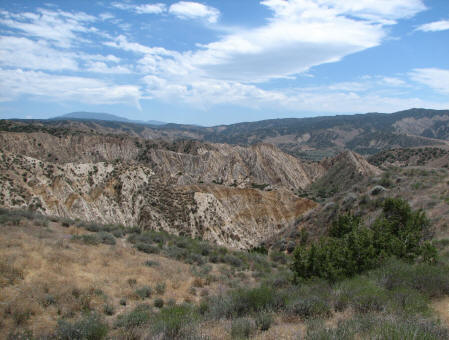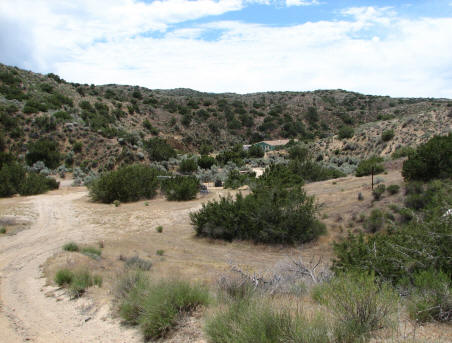|
September 7,
2006
FORESTWATCH, RURAL LANDOWNERS PROTECT LAND FROM OIL DRILLING
U.S. Bureau of Land Management
Withdraws 10,088 Acres from Recent Oil Lease Sale After Groups
and Eight Landowners
File Formal Protests
SANTA BARBARA COUNTY, Calif. –
Conservation groups and rural landowners today applauded the
U.S. Bureau of Land Management’s decision to withdraw 10,088
acres from a controversial oil lease sale.
The lands – located in a remote
area along the boundaries of the Los Padres National Forest, the
Bitter Creek National Wildlife Refuge and the Carrizo Plain
National Monument – were auctioned in June for as little as
$2.00 per acre and represented the first step in allowing oil
development in this remote region. This week, the BLM decided
to revoke the leases after reviewing formal challenges from
conservation groups and rural landowners concerned about the
damage that oil drilling could bring to wildlife, water
pollution and the area’s rural quality of life.
“We’re very pleased with the
decision to protect these national treasures from runaway oil
development,” said Jeff Kuyper, executive director of Los Padres
ForestWatch. “Our region’s national forests, monuments and
wildlife refuges are now safe from the damage that could have
been caused by this bad plan."

This parcel on the
Rangeview Ranch was slated for auction, but is now protected
from oil development. It overlooks the Bitter
Creek National Wildlife Refuge and the unique geologic
formations in Ballinger Canyon in the Los Padres forest.
The BLM conducted the oil lease sale in June, auctioning off the
mineral rights across 32 parcels of land in Santa Barbara, San
Luis Obispo, Kern, Ventura and Kings counties in central
California. The BLM went ahead with the auction even though
ForestWatch, the Center for Biological Diversity and eight rural
landowners filed formal protests, arguing that the BLM should
not have included 11 of the 32 parcels in the lease sale.
ForestWatch and the Center for
Biological Diversity challenged the lease sale because the BLM
failed to properly notify the groups about the auction and
failed to prepare an adequate environmental study of oil
drilling on these lands. The BLM also failed to consult with
expert agencies like the U.S. Fish and Wildlife Service, even
though rare plants and animals like the San Joaquin kit fox,
California condor, California jewelflower and blunt-nosed
leopard lizard were present on all lands to be leased. In
addition, the BLM denied ForestWatch access to various public
documents concerning the auction.
“The BLM’s decision means that,
for now, these ecologically rich areas will be spared from oil
and gas development,” said Monica Bond, a biologist with the
Center for Biological Diversity. “We commend the agency for
listening to the public’s concerns and withdrawing the parcels
from leasing.”

A small residence
on the Rangeview Ranch. The BLM failed to notify this property
owner, and dozens of others, about the lease sale, even
though their land could have been directly affected by oil drilling.
Eight rural landowners also filed formal protests against the
oil auction. They challenged the inclusion of certain
“split-estate” parcels in the auction – privately owned lands
with federally owned underground mineral rights. The BLM
auctioned away these mineral rights without notifying any of the
approximately 48 surface landowners whose property would be
directly affected by the lease sale, even though the agency was
required to do so by law. Without notification, the landowners
were unable to buy back the mineral rights from the government
or directly bid on them during the auction.
In this week’s decision, the BLM decided to grant
all of the protests, and to retroactively withdraw all 11
challenged parcels from the lease sale.
This is the second time in less than a year that the BLM has
withdrawn these parcels from auction.
The Bitter Creek National Wildlife
Refuge is a 14,094-acre sanctuary set aside in 1985 to protect
feeding and roosting habitat for the California condor, one of
the world’s most endangered birds. Located in San Luis Obispo,
Kern and Ventura counties, this refuge is the site where the
last female condor was captured in 1986 for the captive breeding
program. Two of the revoked parcels totaling 2,160 acres are
along the refuge boundary.

The Carrizo Plain National
Monument in San Luis Obispo County was set aside by presidential
proclamation in 2001 to protect one the largest remaining
untouched ecosystem in the southern San Joaquin Valley. It
contains one of the highest concentrations of threatened and
endangered plants and animals in the state. Four of the revoked
parcels (more than 1,800 acres) are along the monument boundary.
The Cuyama Valley is one of Santa
Barbara County’s most rural areas, and federal biologists have
designated its upper reaches as an “Area of High Ecological
Significance” because of the abundance of rare plants and
animals. The area also serves as a gateway to the Los Padres
National Forest and the Dick Smith Wilderness Area. Six parcels
totaling nearly 7,300 acres were auctioned there.
|

